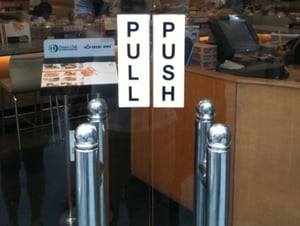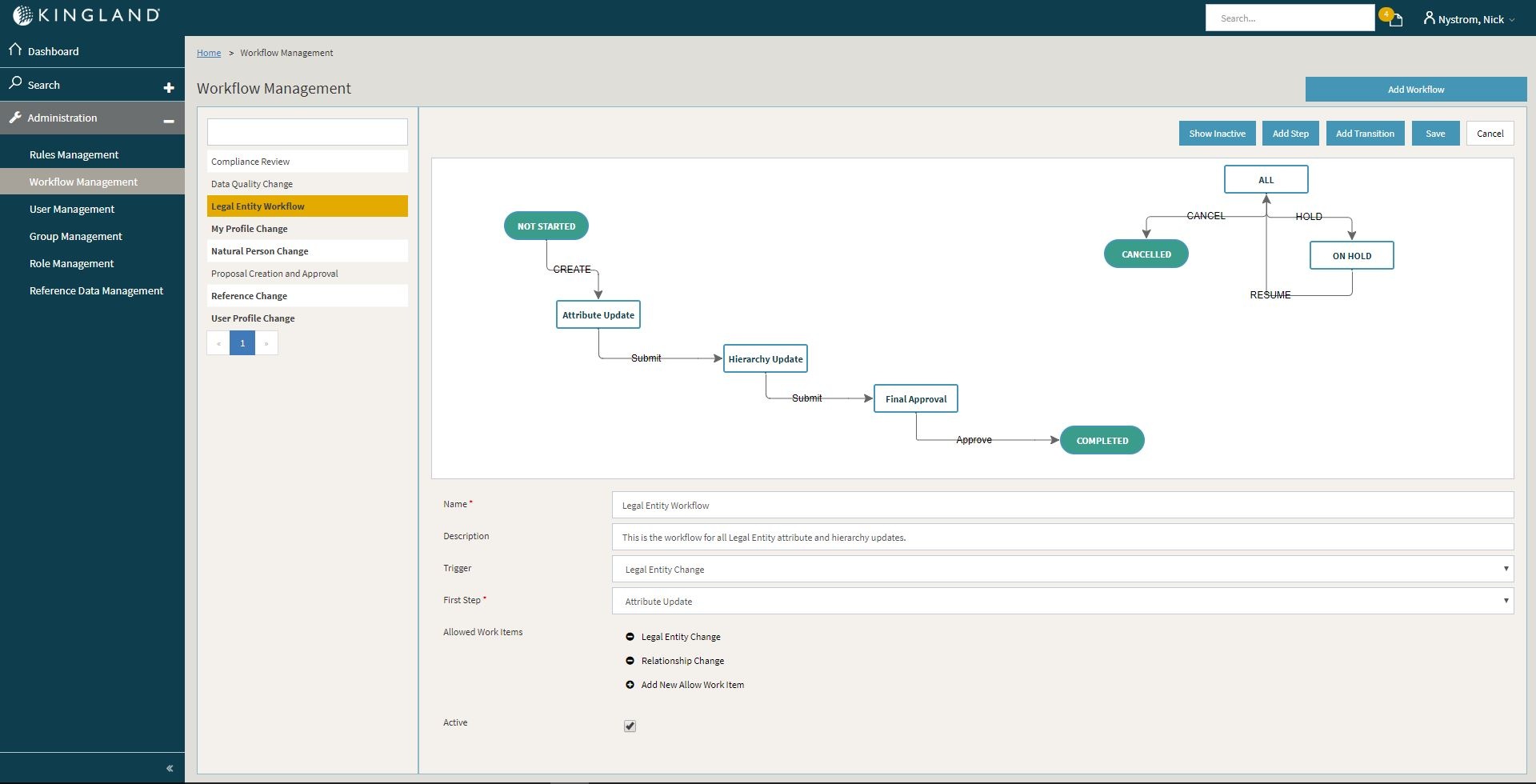
In the last blog post I discussed how creating meaningful user experiences can help increase the usability of products or solutions. In this blog post I want to elaborate on user experience design and how a better understanding of user behavior and user motivations can create a better digital experience.
One great example of user experience design is a concept called The Norman Door. For those of you unfamiliar, Don Norman wrote the essential book on design after becoming frustrated with his inability to use light switches, water taps, and doors while he lived in England. For example, he would try to pull a door open when it was meant for users to push. He noticed that he wasn't the only person who kept using the door incorrectly and came to the conclusion that the door was poorly designed.
So what is the actual definition of a Norman Door?
The photo below shows this example in a real-world scenario.

Keeping the Norman Door out of the Kingland Platform
So how do we make sure that designs don't turn into something like the Norman Door? By making solutions that are user-centric, analyzing how clients use these solutions, and incorporating client feedback into the final product.
The following list represents basic principles of design when it comes to successful UX work at Kingland:
Here's an example of how these principles can be applied in a real-world scenario. The following example is a screenshot from Kingland's Platform and how it relates to the Norman Door concept. The screenshot below shows the Workflow Configuration Manager within the Kingland EDM Platform Suite. There are many UI related buttons that are a "call to action" for users. If users want to create additional steps or transitions, they can easily understand where to do that. All of the workflow steps and transitions are also clickable and instantly allow users to edit them.

At Kingland we approach user experience design from a user need perspective, but also are aware of balancing business goals with technology opportunities or constraints. Our UX Designers at Kingland understand that a solution will not succeed without a healthy business, and a business will not succeed without happy customers or users. Now that you know more about Norman Doors and how we use iterative processes to improve the user experience, I hope you'll think about the design of everyday things and how it affects you. Share some of your Norman Door examples in the comments section below and I'll share more ways to how we approach design with the Kingland Platform in future blog posts.



No Comments Yet
Let us know what you think